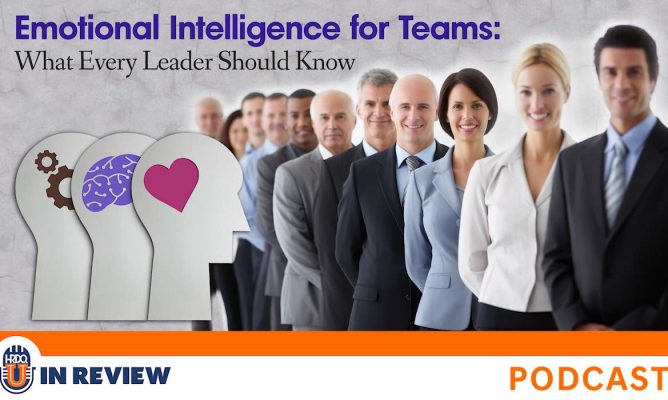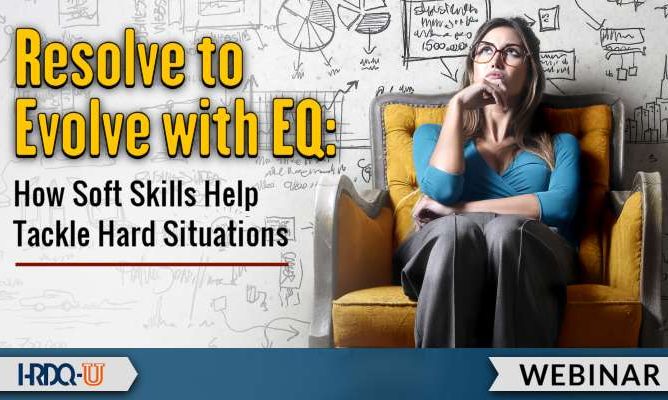You’ve probably heard of the intelligence quotient, also known as IQ. It’s a metric used to gauge how “smart” someone is. IQ may indicate skills such as pattern recognition, book smarts, advanced logic, and comprehension, but it doesn’t necessarily indicate the capacity for empathy, the ability to relate to others, or the overall ability to build successful relationships. That metric is a bit less defined, but no less important. It’s called “emotional intelligence,” or EI, and ensuring your leaders, supervisors, and employees understand this concept is foundational to workplace and organizational productivity. Emotional intelligence is essential for workplace success. It significantly impacts how teams communicate, collaborate, and work together.
How Do You Teach Emotional Intelligence?
It may sound like a daunting subject to train – how do you teach someone foundational qualities of empathy, respect, and understanding? The good news is that it’s possible. It starts with encouraging individual exploration and embedding self-awareness.
Understanding our own core values, motivators, and personality traits can be a great way to gain insight into the same in others. When employees understand their emotional strengths, weaknesses, and preferences, they are better equipped to approach challenging situations, solve problems constructively, and foster positive relationships.
HRDQ-U offers free emotional intelligence training through weekly webinars, podcasts, blog posts, and more, helping employees understand how they present themselves at work and in life. When beginning to explore emotional intelligence webinars, consider implementing a foundational assessment to help get the ball rolling.
Making Emotional Intelligence Applicable
It takes emotional intelligence for individuals to apply self-awareness alone in their daily work. For emotional intelligence to be truly useful, it must be combined with practical applications. Employees can learn more effective techniques for managing their emotions by practicing emotional intelligence in typical work scenarios. Training in emotional intelligence can help bridge the gap between knowledge and application.
Engaging in hands-on activities, such as role-playing and scenario-based learning, facilitates employees’ use of emotional intelligence in various settings. For instance, students could practice handling pressure when there’s a deadline or settling a dispute within the group. With the help of these activities, emotional intelligence webinars and training become more applicable and practical, providing workers with daily tools. By incorporating training in emotional intelligence into these exercises, employees build confidence and competence.
Situations Requiring Emotional Intelligence
There are many situations in the workplace where emotional intelligence is essential. Some examples include:
- Teamwork: Collaboration requires balancing different opinions and emotions. EI helps employees respect diverse perspectives and work together effectively.
- Problem-Solving: High EI allows employees to stay calm under pressure, making it easier to find solutions to complex problems.
- Tight Deadlines: Emotional intelligence helps employees manage stress and remain productive even when under pressure.
- Peer Reviews: Giving and receiving feedback requires empathy. EI ensures feedback is delivered thoughtfully and received constructively.
- Conflict Resolution: Emotional intelligence allows employees to approach disagreements with diplomacy, fostering healthier workplace relationships.
Using Scenarios to Develop EI
The next stage for employees is to apply emotional intelligence in practical settings after they have a basic understanding of it. Employees can participate in role-playing activities that focus on common workplace issues, such as managing team dynamics or meeting deadlines, after attending an emotional intelligence training session. These situations provide staff members with a secure environment in which to hone their emotional intelligence and receive feedback on their responses.
Employees may strengthen their emotional intelligence and foster better relationships and teamwork by implementing emotional intelligence training into their regular work experiences. As they gain experience, emotional intelligence naturally becomes part of their decision-making process, enabling them to support a more peaceful and effective workplace. Additionally, continuous training in emotional intelligence reinforces those skills over time and encourages a supportive, high-performing culture. Long-term success depends on consistent opportunities for training in emotional intelligence, especially as teams evolve and new challenges arise.
After watching our emotional intelligence webinars, consider how you can design scenarios that address these tangible issues and facilitate conversations with employees about their approach to situations with emotional intelligence.
Does HRDQ-U offer more free emotional intelligence training and learning opportunities than webinars?
We offer a wide collection of learning resources, including free emotional intelligence training webinars, podcast episodes, and articles.
Our podcast, HRDQ-U In Review, elevates your training and development skills by featuring interviews with subject matter experts and thought leaders from recent webinars, who delve deeper into the content they shared.
The HRDQ-U Training Blog features articles written by presenters and our CEO. Each article explores the latest trends in the business world and provides readers with more practical strategies to address today’s challenges.
Get started today with HRDQ-U’s free emotional intelligence training and elevate your workplace.











































